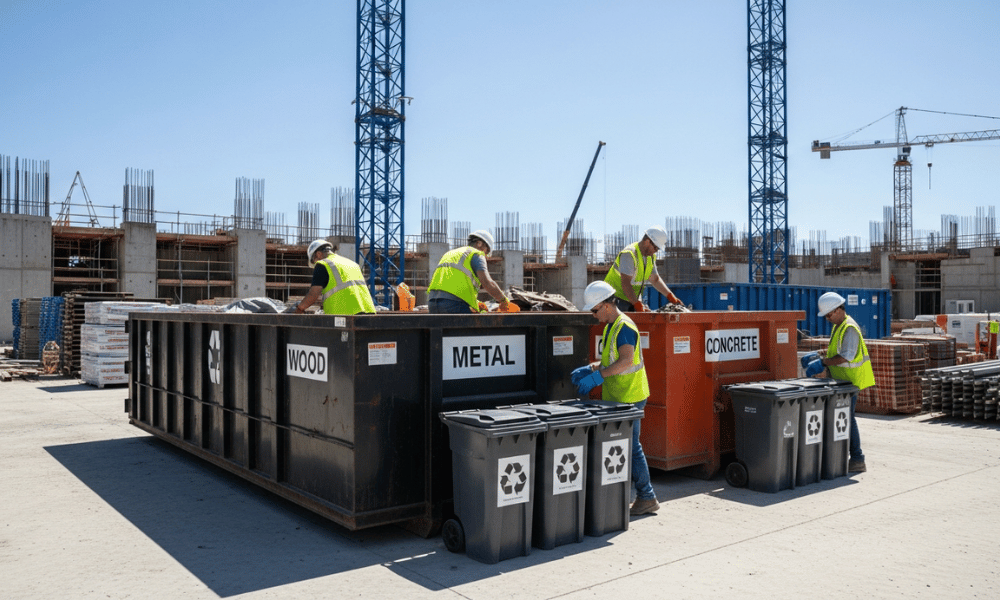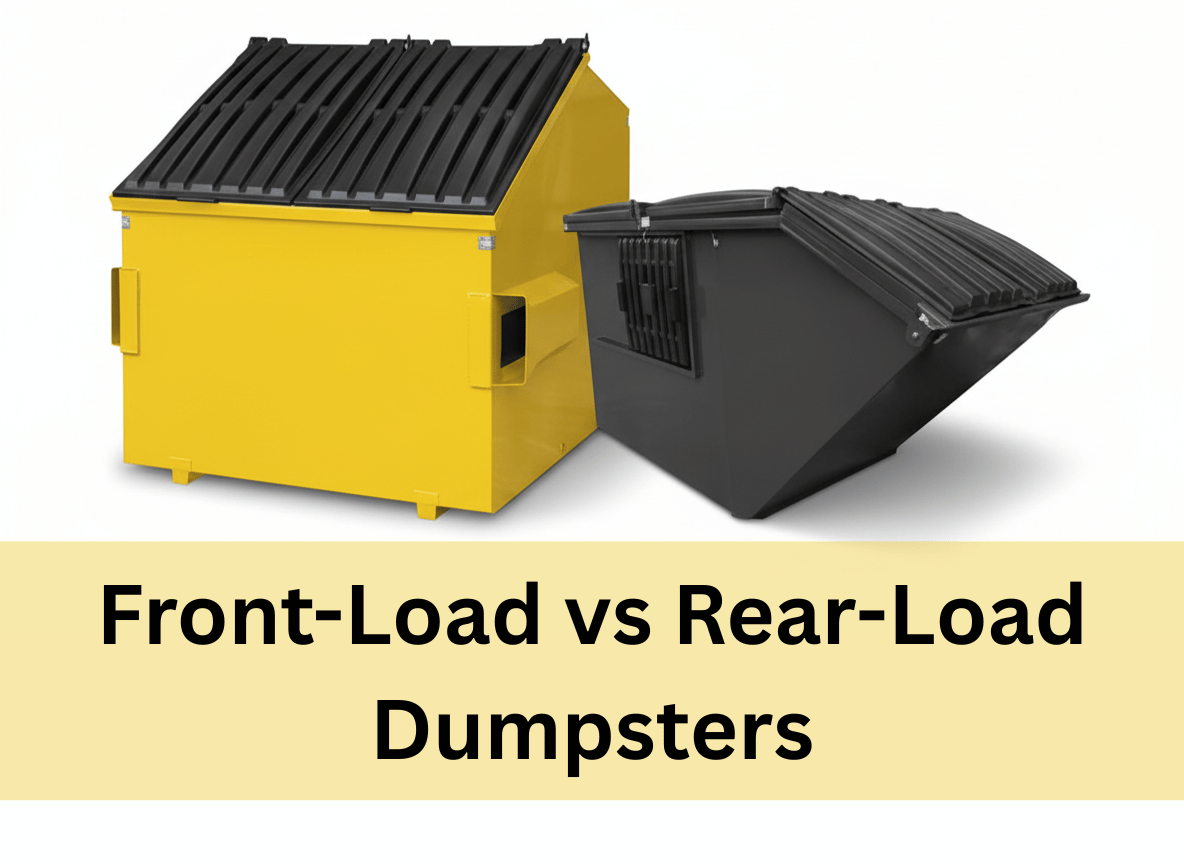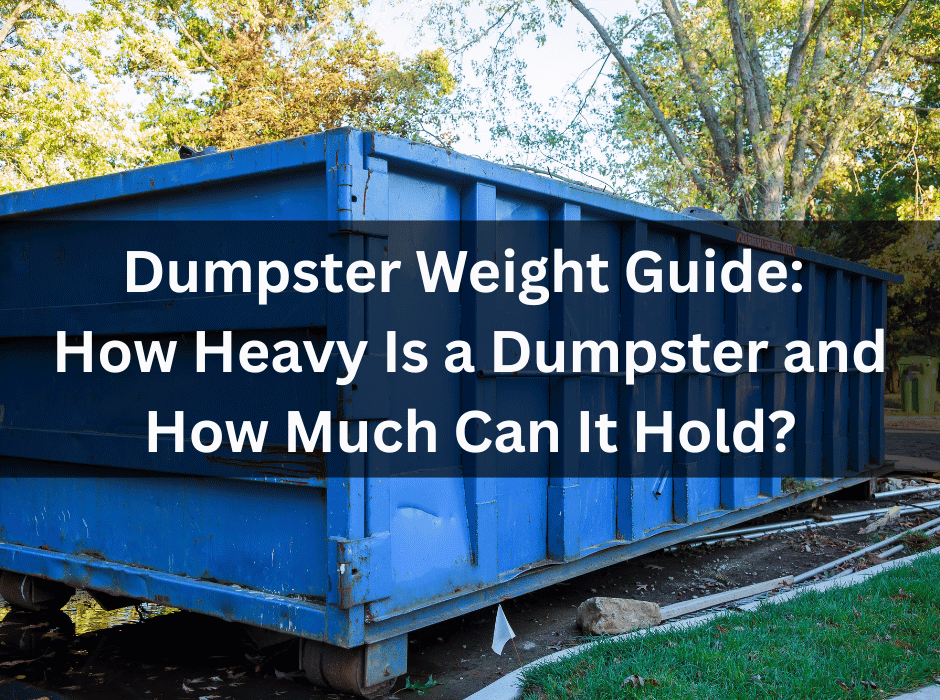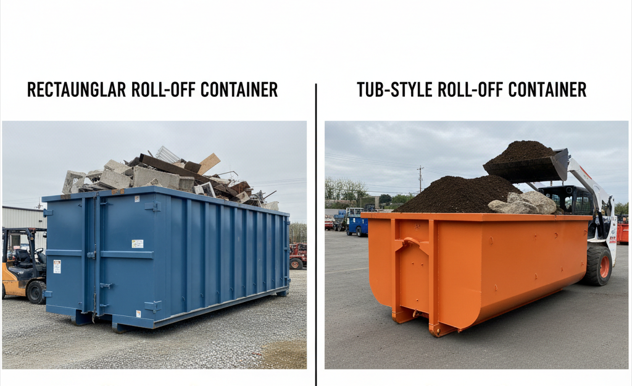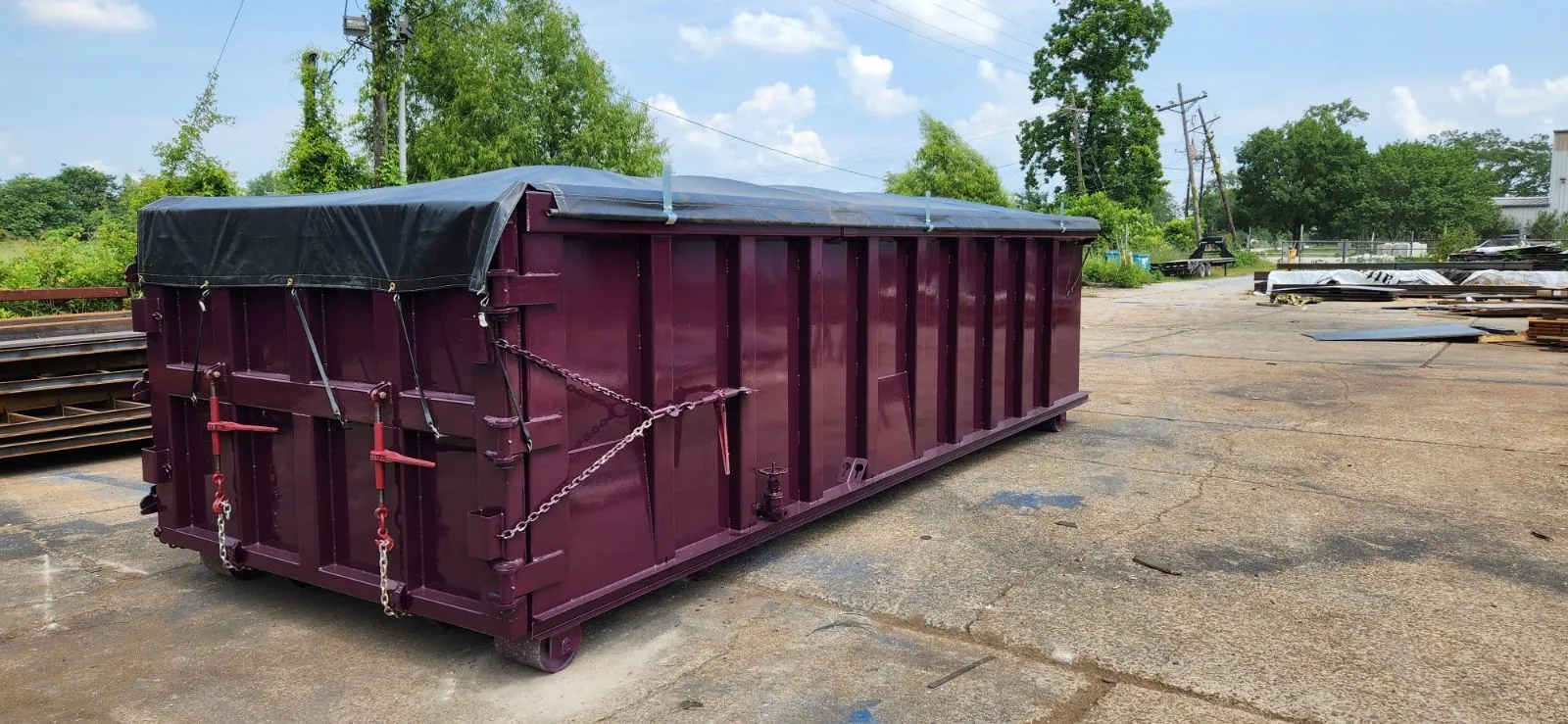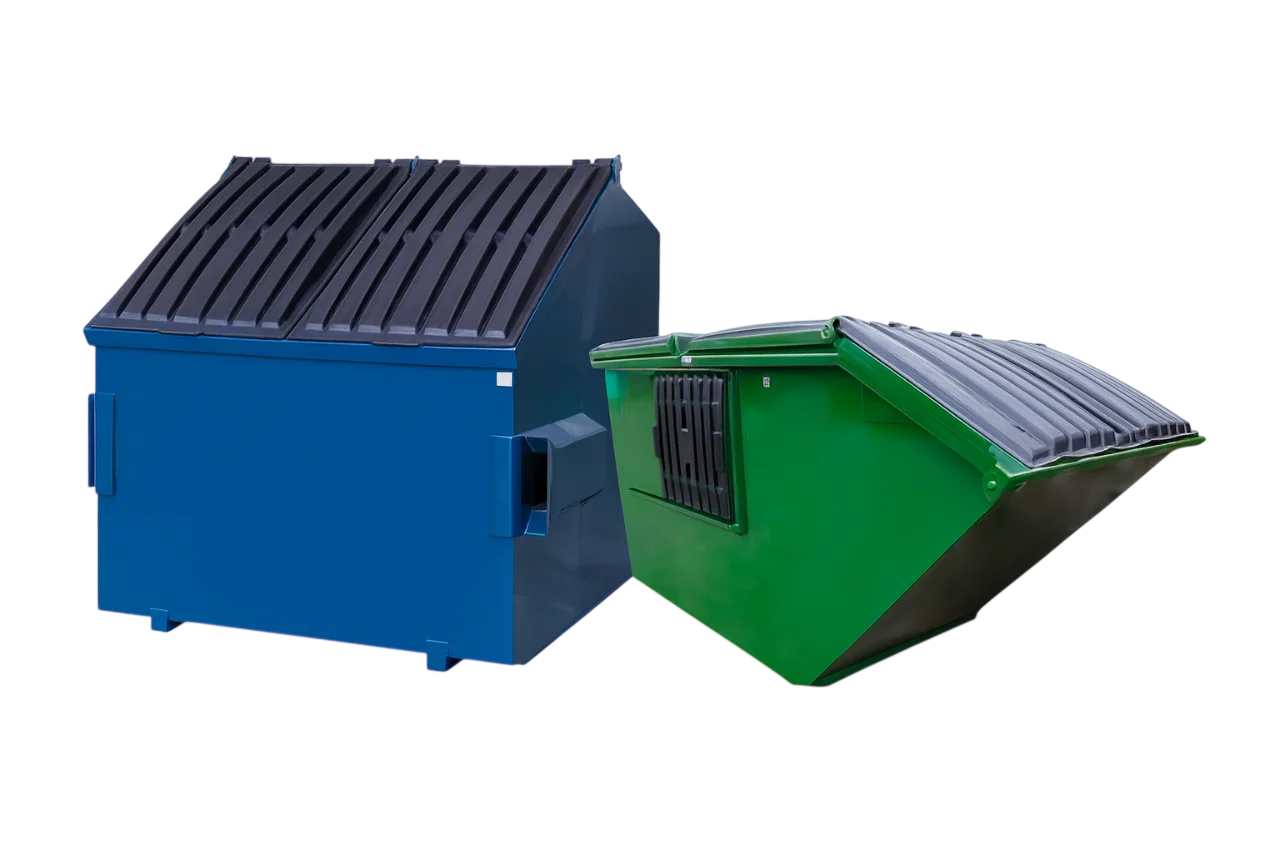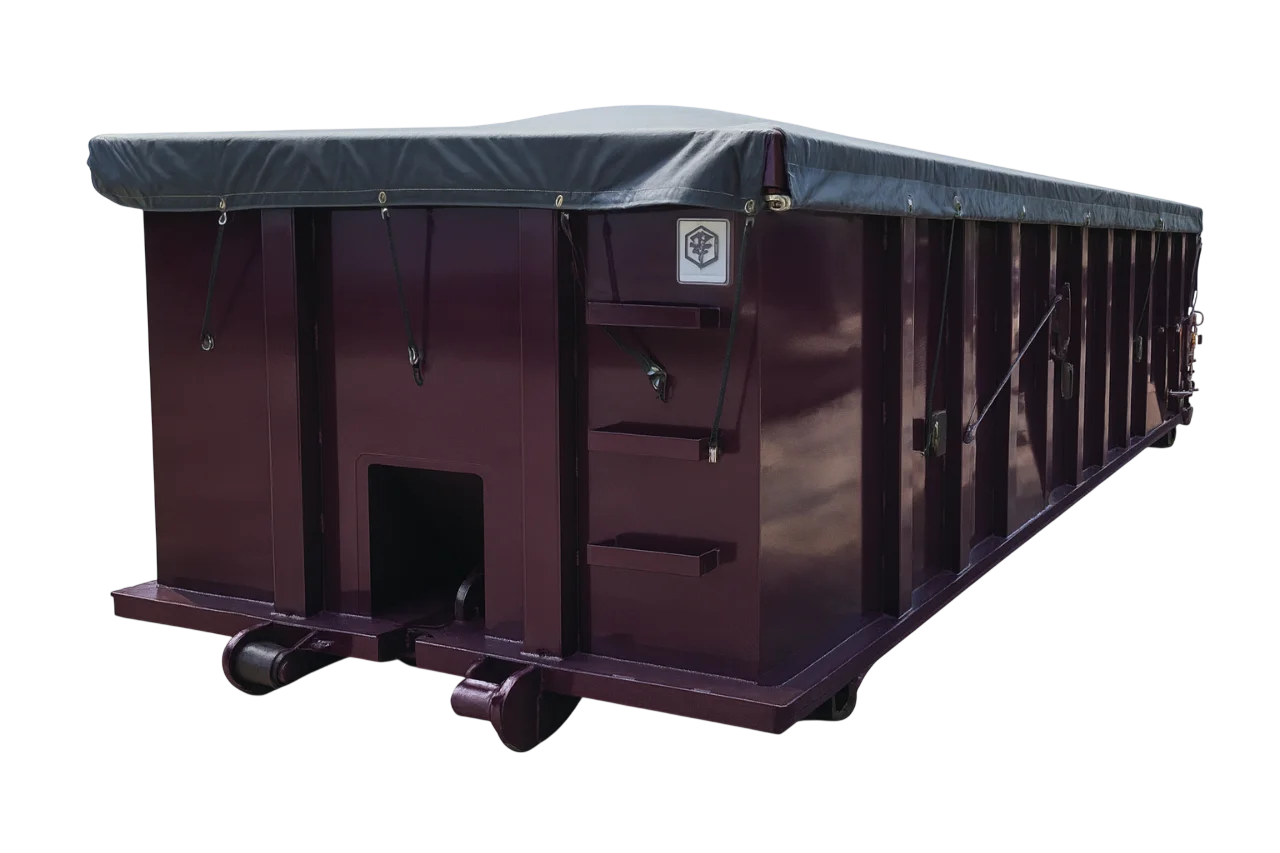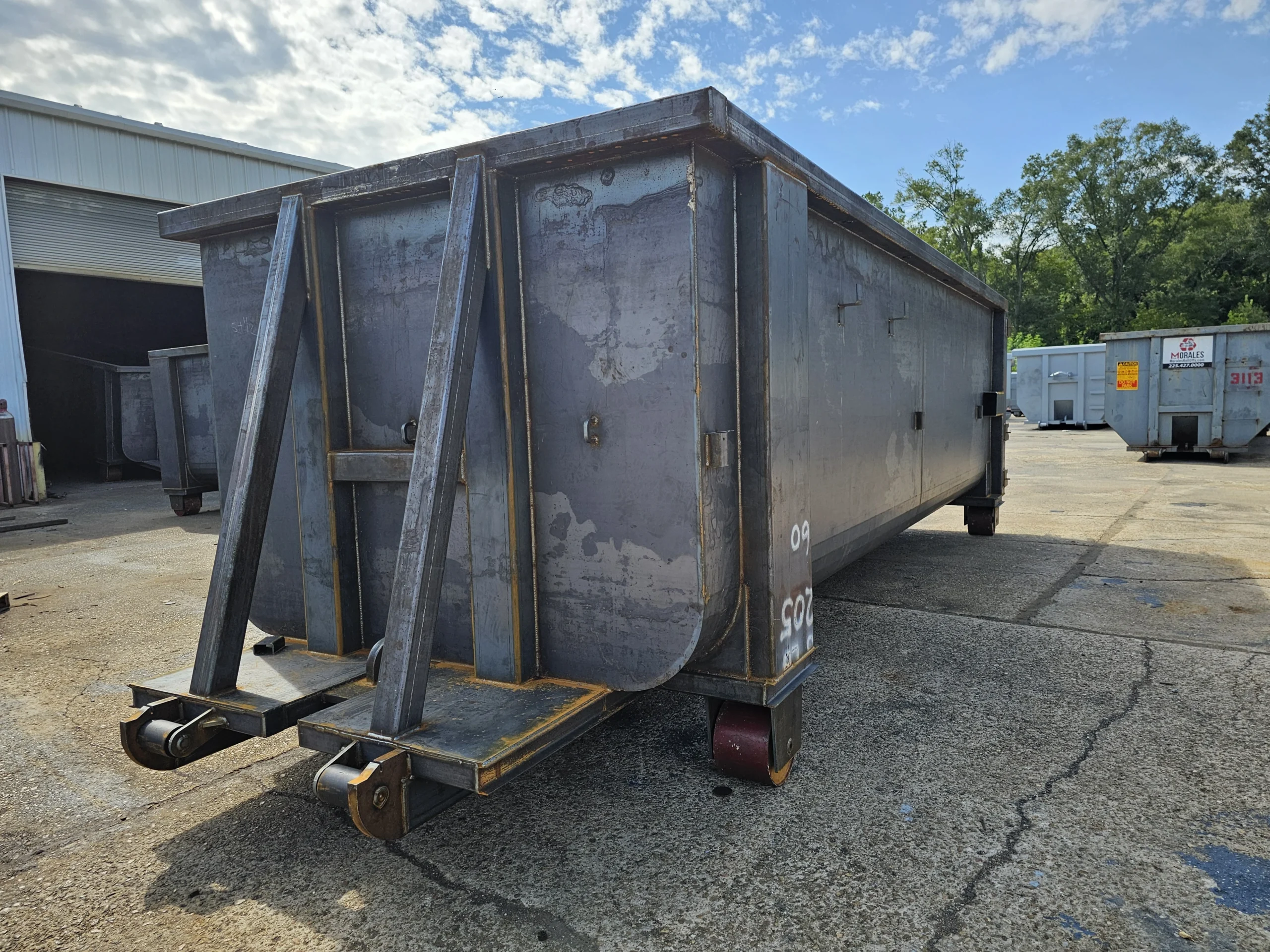A roll-off container (often called a roll-off dumpster) is a large, open-top waste bin used to haul bulky debris and trash. In North America, it has a rectangular base and wheels at one end so a special roll-off truck can tilt its bed and gently roll the container on or off. Most roll-off bins are open on top for easy loading, and many feature a hinged door at one end to facilitate dumping heavy items. Manufacturers like Refuse Fab build these rugged steel containers to be durable on construction sites and tough clean-ups, making waste collection safer and easier for contractors and homeowners.
How Roll-Off Containers Work
A roll-off truck delivers the bin right to your site. The truck’s hydraulic bed rises and, using a winch or cable, the empty container “rolls off” onto the ground. When it’s time to haul away, the truck pulls the full container back onto its bed with the cable or extends a hook-lift arm to snag a bar on the bin. In transit, the full roll-off is usually covered with a tarp to prevent debris from blowing out. Because filled bins are very heavy, there are strict weight limits. Overloading is not only unsafe (it can tip the bin) but may also cause the truck to refuse pickup.
Sizes and Types
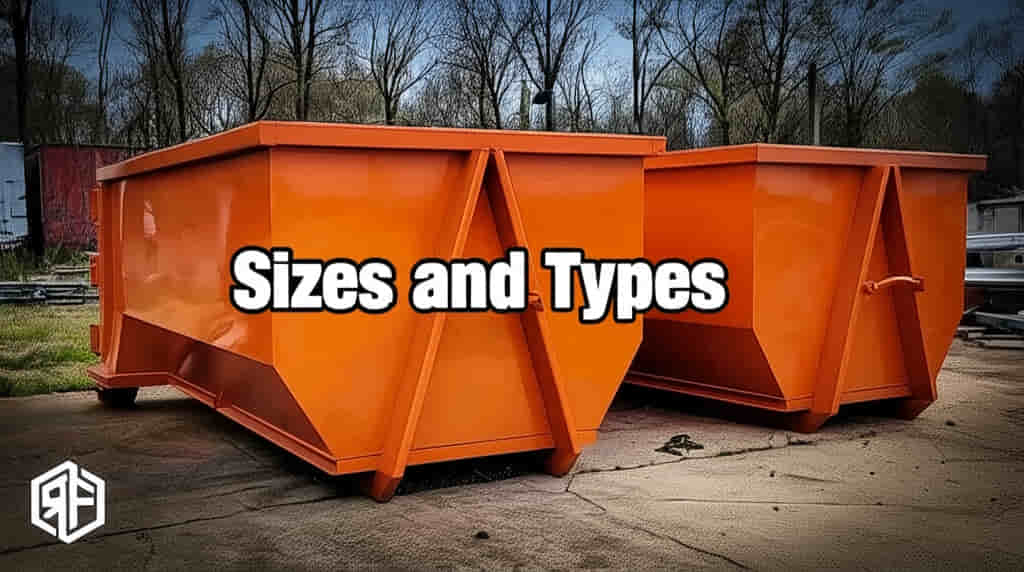
Roll-off containers come in various sizes and styles. In the U.S., common capacities are 10, 15, 20, 30, and 40 cubic yards. Roughly, these correspond to the following dimensions (length × width × height):
10–15 yard bins: ~12 ft × 8 ft × 4–6 ft. Good for small cleanups, garage remodels or yard waste.
- 10–15 yard bins: ~12 ft × 8 ft × 4–6 ft. Good for small cleanups, garage remodels or yard waste.
- 20 yard bins: ~22 ft × 8 ft × 4 ft. Common for medium jobs like roof repairs or house cleanouts.
- 30 yard bins: ~22 ft × 8 ft × 6 ft. Used for larger renovation projects.
- 40 yard bins: ~22 ft × 8 ft × 8 ft. Handles big construction sites or demolition debris.
For a closer look at roll-off container sizes and dimensions, check out our detailed guide on roll-off container sizes for more insights.
Choosing the right size is important. A bin that’s too small risks dangerous overloading, while one that’s too large simply wastes space. Contractors often rent a bigger size just in case, since an overloaded container can be unsafe or might not be hauled away.
Aside from size, roll-offs also vary by design. The standard roll-off dumpster is just a rectangular steel box. Other types include tub-style bins (with sloped sides for easier dumping), sealed (liquid-tight) containers for wet waste, and specialty bins like dewatering units or recycling chutes. But the most familiar design remains the tough open-top dumpster for general waste and demolition debris.
When and Why to Use a Roll-Off
Roll-off containers are ideal whenever you have a lot of waste or bulky material. Typical uses include:
– Construction and Demolition. Debris from building, renovating or tearing down a structure – lumber, drywall, roofing, concrete, etc. Roll-offs keep the site clean and can hold very heavy loads.
– Home Renovations & Cleanouts. Disposing old furniture, carpeting, appliances, yard waste, and trash during major remodels or spring cleaning.
– Landscaping Projects. Removing brush, soil, concrete, or other debris after a yard or paving project.
– Storm Cleanup. Collecting trees, branches, damaged roofing or siding after storms, hurricanes, or natural disasters.
– Large Events or Hoarding Cleanups. Clearing out entire homes, offices, or community projects in one go.
Using a roll-off saves many trips hauling garbage bags. You just toss debris into the bin and call the company for pickup. Once filled, the container is taken to a landfill, recycling center, or transfer station for disposal. This efficiency makes roll-offs popular for contractors, businesses and homeowners tackling big projects.
Cost Structure of Rental
Dumpster rental costs typically have three parts:
– Dump fee: Charged by the disposal facility, usually based on the weight (per ton) of the waste. This often makes up most of the cost.
– Haul fee: A flat rate from the rental company covering delivery and pickup.
– Overage fee: A per-ton charge for any weight over the agreed limit (typically the same rate as the dump fee).
For example, you might see a quote like “$500 rental fee (up to 5 tons) plus $40/ton over.” The dump fee varies by location and waste type. Always ask the provider to explain how weight is measured – usually the truck is weighed empty (tare) and then full, and you pay for the difference.
Safety Tips and Best Practices


- Mind the weight. Know your bin’s weight limit. Overloading a 20-yard dumpster (often ~3–4 tons max) can tip the bin or damage the truck.
- Load evenly. Spread debris out in the bin. Piling high on one side is unsafe. Don’t stick out lumber or metal that could harm workers or puncture the truck’s tarp.
- Protect the ground. Place plywood or sheets under the container wheels to prevent scratches on asphalt or concrete. Also, keep the site level – if rain comes, a bin on dirt or soft ground can sink, trapping the truck.
- Stable placement. Always put the roll-off on a hard, flat surface (gravel, concrete, or asphalt). Ensure there’s enough clearance (about 40–50 feet) for the truck to back up and unload. Keep power lines and other obstacles away from the truck’s path.
- Cover if needed. If your rental or local laws require it (or if debris is lightweight), cover the loaded container with a tarp or net to prevent material from flying out.
Following these practices protects property and people. Remember: even though a Refuse Fab roll-off is built of heavy gauge steel, proper use is key. Planning placement and loading reduces the risk of damage to driveways, streets, or your own vehicle.
Materials NOT Allowed
Many items are prohibited from roll-off containers for safety and legal reasons. In general, you should never put:
– Hazardous liquids: Paints (with liquid), solvents, gasoline, oils, acids, lacquers, etc. (Dried paint cans without liquid are usually okay.)
– Batteries & electronics: TV sets, computers, phones, batteries and other e-waste (they contain toxic metals).
– Tires: Old tires or tubes are often banned by law.
– Appliances with refrigerant: Old refrigerators or air conditioners with Freon.
– Medical or asbestos waste: Any biological or asbestos-containing materials.
– Recyclables/garbage: Items that should go into recycling or curbside trash (paper, cans, yard waste, etc.) usually have separate collection.
If banned items are thrown in, the company may refuse to haul the bin or charge extra for special handling. When in doubt, check with the rental provider beforehand. Many hazardous items require special drop-off (e.g. local recycling centers for e-waste or paint).
Permits and Regulations
Check local rules before you order a dumpster. Many cities require a permit if you place a roll-off on public property (street or sidewalk). Permits help ensure safe positioning (e.g. staying clear of fire hydrants or obstructing traffic). If the bin stays entirely on private property (driveway or lot), permits are often not needed. Rules vary: sometimes the homeowner must get the permit, other times the rental company handles it.
Always clarify permit responsibility up front. Noncompliance can result in fines or the bin being towed. When you rent from a reputable provider (or work with an experienced manufacturer like Refuse Fab), they can guide you on permit requirements and proper set-up.
By understanding what a roll-off container is and how to use it safely, you can keep your project efficient and compliant. Roll-off dumpsters are invaluable tools for big clean-ups – just follow guidelines on placement, contents, and permits, and you’ll avoid hassles.
Refuse Fab’s team is available to help with any questions about container size, delivery, or regulations, ensuring you get the right bin for the job.


